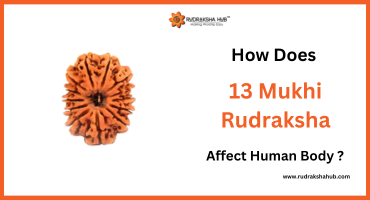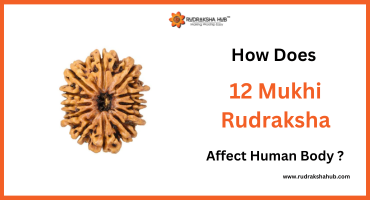
A beautiful location in the mountains near a holy river in a cold embrace, Kedarnath is loved by spiritual souls and is the favourite place of devotees to visit. Every year thousands of people visit this place to worship and please lord Shiva. It is located in Rudraprayag district of Uttrakhand, which is in the lap of the Himalayas. It is also a part of Char Dham, so every Sanatana follower wants to visit it once in their life. But do you know how Kedarnath has established and the legends behind it? If we believe in Hindu tradition, the temple was initially built by Pandavas (the Mahabharata heroes) and placed in one of the twelve Jyotirlingas, the holiest Hindu holy site of Shiva. It is also one of the Chota Char Dham pilgrims and the first pilgrims of Panch Kedar.
What is the Story behind the establishment of Kedarnath?
There are various legends about the Kedarnath temple. The main one is that after Mahabharata, Pandavas (five brothers Arjuna, Yudhisthira, Bheema, Nakula, and Sehdeva) were the hero of, had the guilt of killing so many people and their cousin Kauravas in Kurukshetra at Mahabharata. They were trying to get the forgiveness of Lord Shiva as they made a sin of killing the priest class Brahmins (Brahm hatya) and gotra hatya (fratricide), but as Shiva didn’t want to forgive them so easily .so he found a way to hide from them. He converted himself into a bull and kept roaming in the Himalayas in the Garhwal region not to see him. On the other hand, Pandavas left their empire and first went to Shiva's most loved City, Kashi (also known as Varanasi), to visit his Kashi Vishwanath temple. Still, after failing, they turned to Garhwal Himalaya (people believe that Shiva loves cold places like Himalaya). Bhima, the second elder brother of Pandavas, decided to look in the mountains, facing each other.
After roaming a little, He found a bull gazing nearby Gupt Kashi (known as hidden Kashi due to Shiva deciding to hide there), which was adorable compared to average bulls. It takes seconds for him to recognize that Lord Shiva is the bull, and he tries to catch him by holding his legs and tail (Bheema is known for his incredible power). Still, Shiva immediately hid in the ground by disappearing himself and later came out into different parts at different places. It is believed that his hump came out in the Kedarnath, his arms were visible in the Tungnath, and his face appeared in the Rudranath, the nabhi (navel) in the Madhyamaheshwar, and hair in Kalpeshwar.
But this legend doesn't end there as it is believed that after failing to stop Shiva from disappearing, Bheema pleased Shiva by trying, and that's why he reappeared in five places at the Kedarkhand in Uttarakhand. Pandavas built five temples with almost the exact structure and looked the same. They later meditated at Kedarnath and performed a Yagya (fire sacrifice), and it resulted from their sacred path known as Mahapanth or sawargarohini to heaven. After visiting Panch Kedar temples, it is believed to see the Vishnu temple known as Badrinath; only then will your trip be successful as a true devotee of Lord Shiva.
In the book of Mahabharata, there is no mention of Kedarnath, but as this Story is after the "Yudha” war, it still makes sense. But there is a mention of Kedarnath in the book of “Skanda Purana” where it is believed that Shiva released the Ganga from his hair at the place named "Kedara” in the tale which tells about the origin of the Ganges River. Kedarnath is also believed as the death place of Adi Shankaracharya by many. Still, it doesn't make this popular as Kedarnath was a famous pilgrim in the 12th century and his death temple is behind the Kedarnath temple.
If you believe the purohits (priest) of the temple, their ancestors (Rishi Munni) were praying on the lingam (Shiviling) from the time of Nara-Narayana. The grandson of Pandava (king Janamajey) allowed them to prey their and from that, they have been serving Shiva from that time. Even an English writer wrote many years ago there was the same purohit of Kedarnath Mandir and Badrinath Mandir, who travel daily at both places to serve Lords.
There are many other legends related to the Mandir and Pandavas, whereas the idols of Pandavas situated at the hall in the Kedarnath somewhere prove them true. And another reason the link of Kedarnath and Badrinath mandir is that the Swargarohi’s are located at the top of the hill, which is not so distinct from the Badrinath Mandir. People believe that when Yudhishthira was going to heaven, his thumb fell to the earth, and this is why he installed a shiva linga there, which was shaped as the finger to please Shiva.
This temple is believed to be more than 1200 years old, and it faced various harsh situations, many tough seasons, floods, and other national disasters. It is believed that Shiva is in his identical form there, and people can only visit this Mandir between April to November. But as it stays open for six months, whereas for six months, the vigraha (divinity) of the Mandir is taken down to Ukhimath, and prayer is believed to be done there.
Shiva always keeps blessing his Devotees, and the Kedarnath mandir is one of the most popular places to visit by his followers. That place nearby Mandiki river has amazing divine vibes to visit. If these legends are true, they can't be justified by anyone, but visiting Kedarnath makes people feel so calm and Divine.
If you want to buy Rudraksha or any other item of worship at the premium quality or want any astrological advice or a knowledgeable priest to perform any pooja (worship) or perform an online pooja, visit our official website: www.rudrakshahub.com.














